Komodo dragons have garnered the interest of animal lovers for centuries. These massive reptiles are known as one of the world’s largest and most dangerous lizards, with a bite that can leave a lethal infection and death.
They’ve climbed to the top of the food chain in their own ecosystems. These monsters eat meat, but do they eat anything else? Are Komodo dragons omnivores?
Komodo dragons are not omnivores. Komodo dragons are massive predators that eat a lot of meat, and meat only. Their digestive systems are not equipped to handle other kinds of food, so they have evolved to become carnivorous.
So, now that we have the main question answered, let’s take a deeper look at this magnificent animal and its eating habits.
Keep reading now to get all the details on Komodo dragons.
Eating Habits

The Komodo dragon is a solitary creature, opting to hunt prey on its own away from other members of its species. These are not packed animals and will even fight other Komodo dragons if they encroach on their territory.
Additionally, Komodo dragons are carnivores, meaning they eat meat only. This is one of the reasons they have not been able to adapt well to changes in their environment.
They rely entirely on prey animals in their environment, and with a decline in suitable prey, their own numbers will dwindle.
Despite not being the most adaptive of animals, Komodo dragons have been known to swim great distances to other islands in search of food or new habitat.
They are amazing swimmers, traveling distances of many miles to reach distant islands. This is how they originally spread across hundreds of different Indonesian islands and are now confined to only five.
Komodo Dragon Habitat
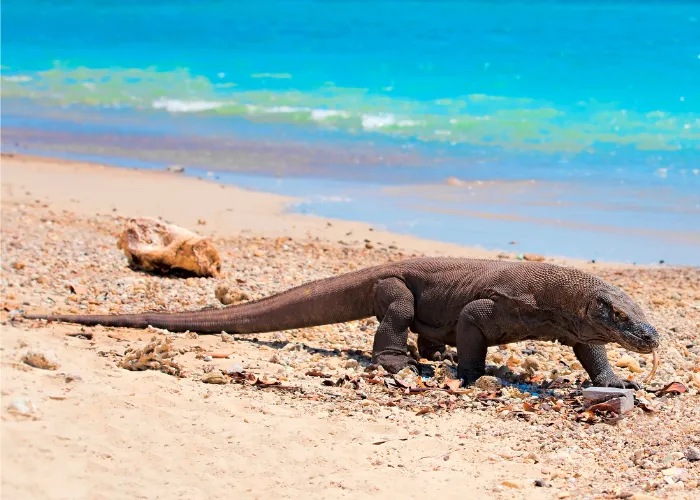
Komodo dragons used to be spread out across hundreds of Indonesian islands in times past, but in recent years, we’ve seen a drastic decline in their population.
Due mainly to environmental factors like climate change and a loss of available prey, Komodo dragons are now only found on five islands in Indonesia. These islands are Komodo, Rintja, Padar, Flores, and Gillimontang.
Due to their endangerment, Komodo dragons have been on the endangered species list.
The five islands they call home are in the protected territory in Komodo National Park, offering them a safe haven from the quickly changing world around them. With such legal protection, we may yet see a surge in the population of these giant lizards.
Komodo dragons like to live in heavily wooded areas, scrubby hillsides, and dry savannahs. They may also hunker down in dried-up riverbeds, as these provide a natural habitat suited to their preferences.
Komodo Dragon Lifestyle

So, we now know that these large carnivores like to live in dry areas with plenty of plant cover and can only eat meat.
But what does a day in the life of a Komodo dragon look like specifically?
As we mentioned earlier, Komodo dragons are solitary predators. They mark out a wide swathe of land as their own territory, patrolling it day in and out in search of prey.
They’ve even been known to travel over two miles per day in search of food, which can be a long way if you haven’t eaten in a few days.
Even though they like to hunt alone, a fresh kill often brings in a group of dragons. Komodo dragons like to gather around and poach off each other’s hard work, and whenever there is a fresh body to be found, you can be sure to find several dragons swarming it for meat.
Komodo dragons will hide in dense brush and plant cover to catch such prey, waiting patiently for their prey to pass by. Their greyish-brown skin is perfect for camouflaging them amid such undergrowth, making them incredibly hard to spot when they want to remain hidden.
The lizard will pounce with astounding speed as soon as suitable prey presents itself. They tend to go straight for the throat but opt for a hind leg if their quarry is too fast.
This may seem strange, but Komodo dragons know what they’re doing. A shallow bite on a leg or arm will soon bring their prey down. This is because their saliva contains a host of deadly bacteria that will quickly cause infection and travel through the body, wreaking havoc.
Once this bite is made, the dragon need only tail their prey until they succumb to the bite’s deadly infection.
Reproduction
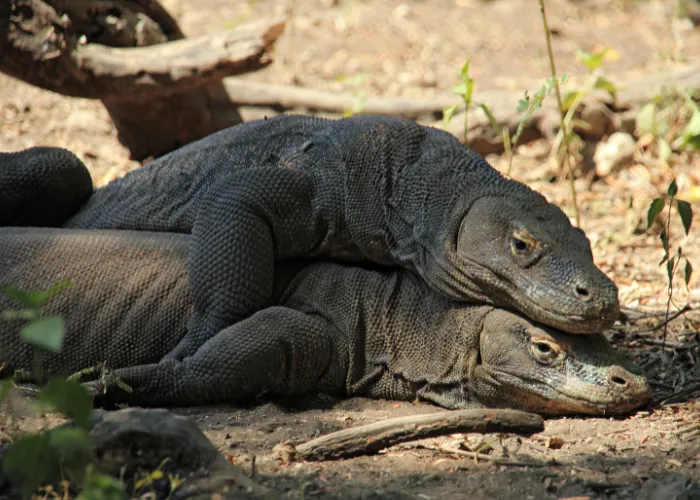
These predators will gather in large groups when there’s food to be found and when it’s mating season. The mating season normally happens at the summer’s end, sometime in September.
Male Komodo dragons will fight each other for mating rights to secure the best mates. They do this by propping themselves up on their tails, then swatting at each other with their wickedly long claws. The victors will then get all the attention from the best females.
After mating, a female will lay a clutch of around 25 eggs. They deposit these leathery eggs into a deep hole, often dug in soft sand found nearby.
Like humans, young Komodo dragons need around 9 months of gestation before they’re born. Unlike humans, however, Komodo young are entirely self-sufficient as soon as they hatch, venturing off into the world on their own in search of food.
Final Thoughts
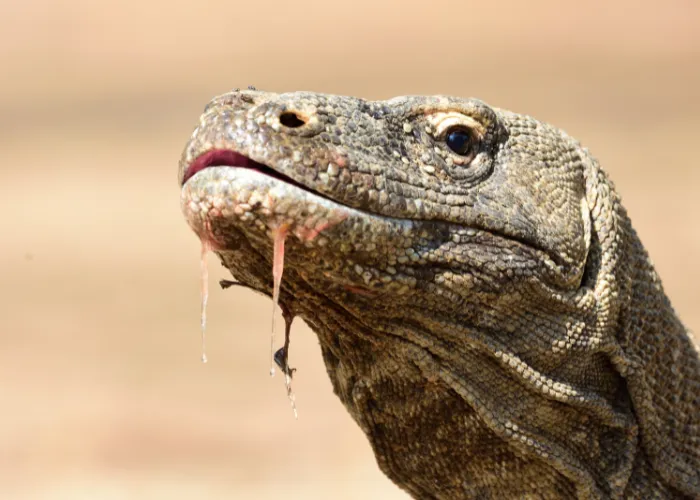
The magnificent Komodo dragon has seen better days, requiring governmental protection to keep them from going extinct. Although it may seem like these monster-sized lizards could eat whatever they want, this is not the case.
Komodo dragons are not omnivores but are carnivorous instead. With a dwindling food supply and changing environmental conditions, they can only be found on a handful of Indonesian islands today.
We hope this brief guide has answered all your questions about whether or not Komodo dragons are omnivores.
For more interesting Komodo dragon facts, check out our other article below now!

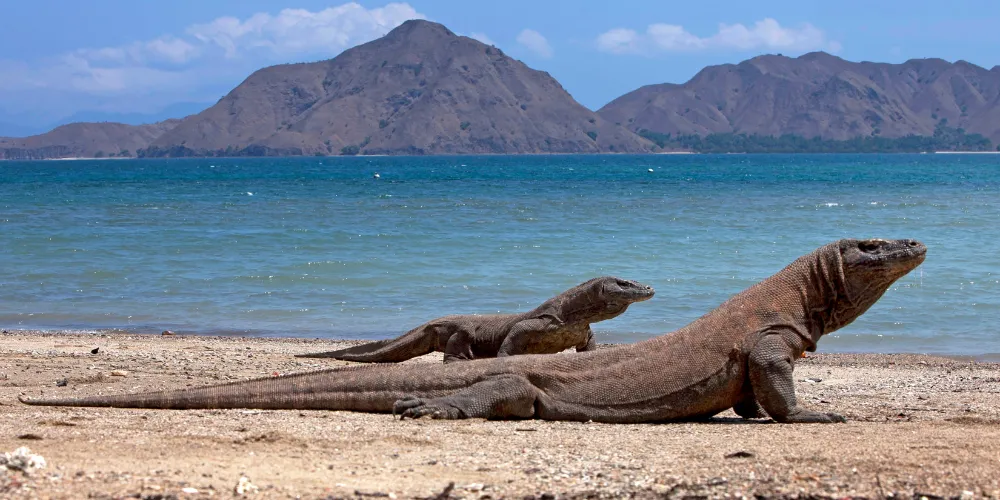

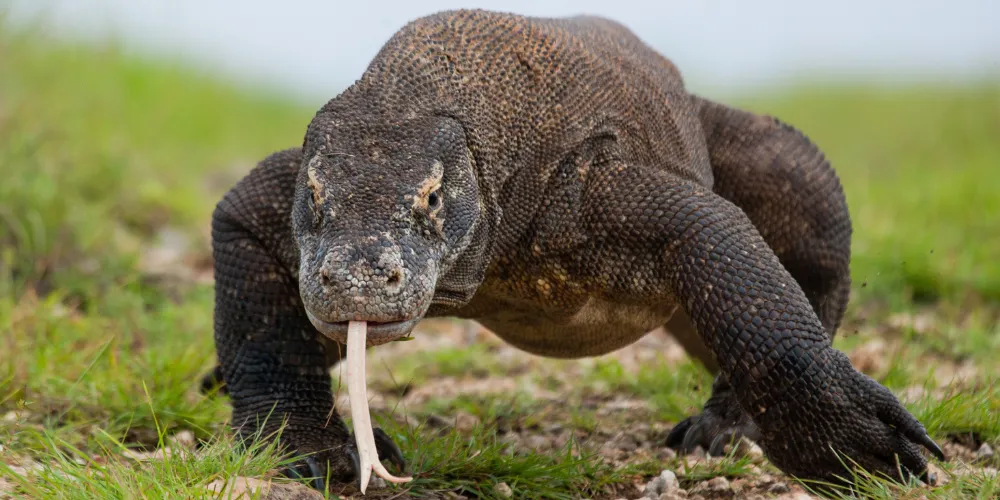
Thx